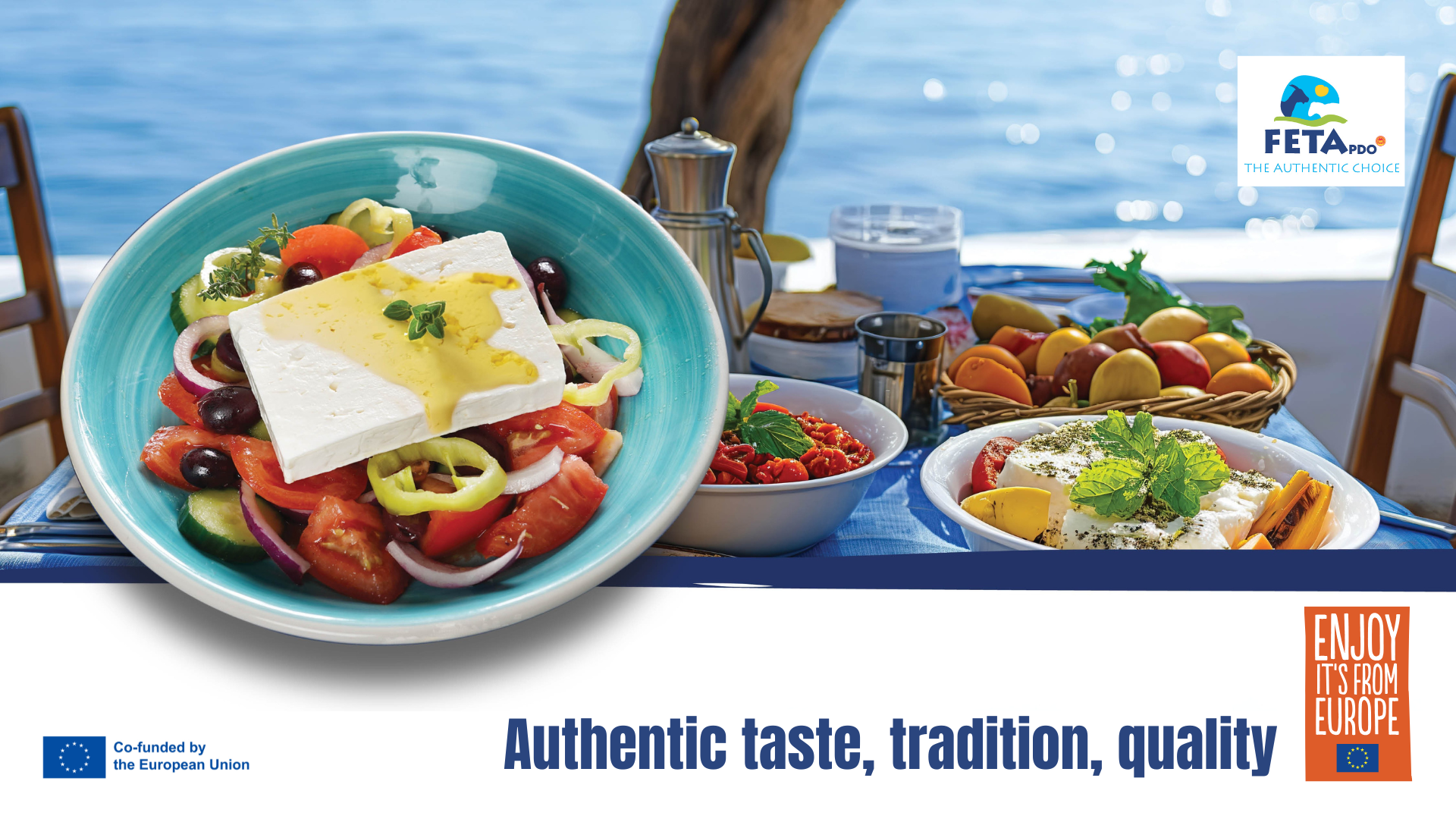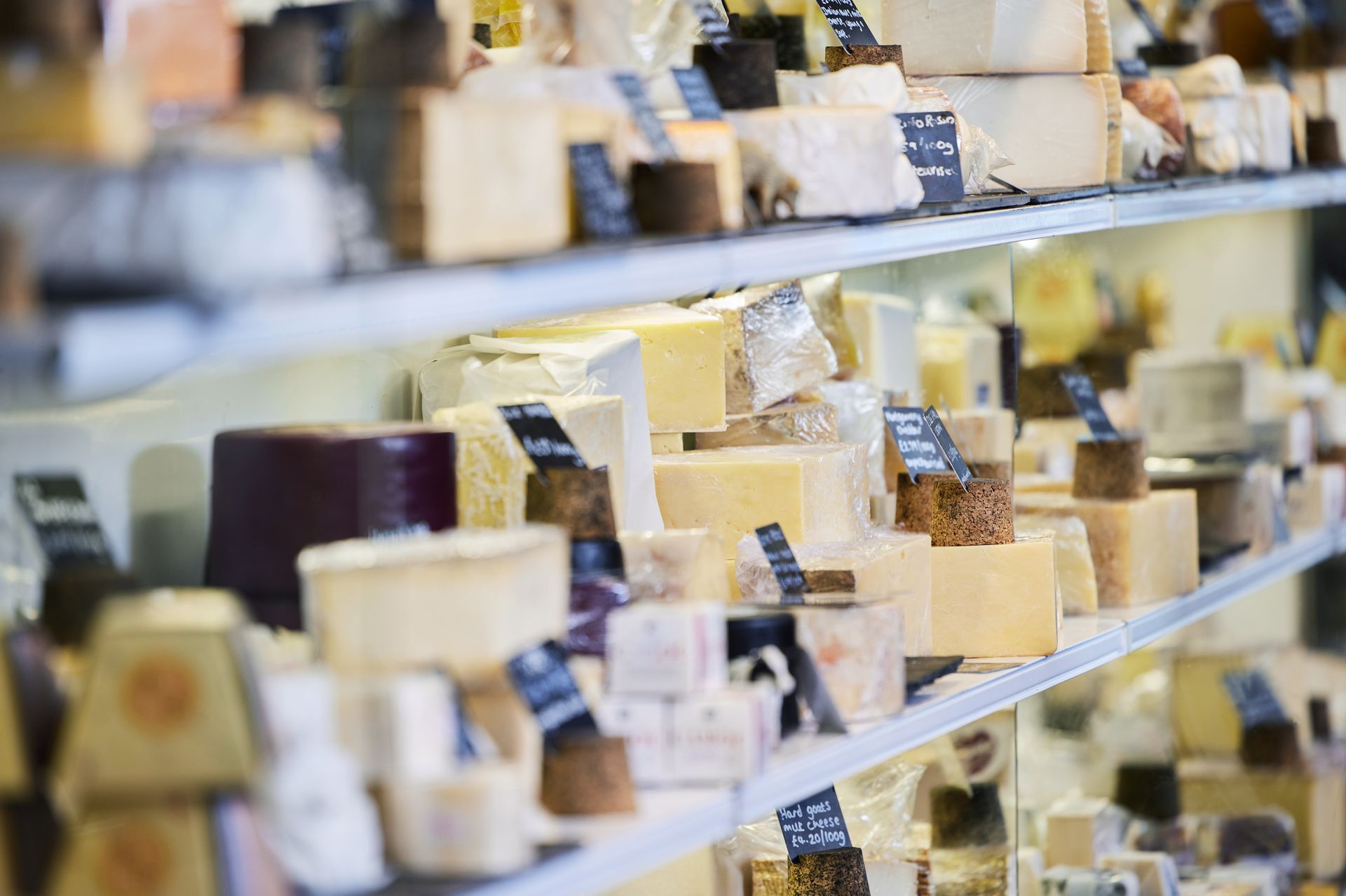Solving the wonky cheese label problem
steve • February 6, 2025
Do wonky labels impact consumer purchase?
For cheese brands, the battle for premium perception extends beyond product quality - it hinges on presentation. A misaligned label, no matter how small the deviation, can diminish brand trust, create operational inefficiencies, and lead to costly reworks.
For consumers they generally perceive "wonky" labels on packaging negatively, often associating them with a lack of quality, unprofessionalism, or even distrust, potentially leading to reduced purchase intentions.
The scale of the problem is staggering:
The result? Wasted time, increased costs, and a brand/ product presentation that falls short of consumer expectations.
Eliminating Manual Rework and Reducing Costs
By ensuring accurate label placement from the outset, cheese producers can eliminate the need for additional staff to manually correct misaligned labels. This reduces labour costs, minimises waste, and improves overall production speed.
Enhancing Brand Perception and Retail Compliance Consistently well-labelled products:
Recognising that no current labelling system could fully resolve these issues, Inspiron Systems took a step back and reimagined the solution. Their answer? A groundbreaking Cheese Centralizer designed to precisely position cheese packs before labelling. World Debut at the International Cheese and Dairy Expo 2025.
Inspiron Systems is set to unveil the Cheese Centralizer at the International Cheese and Dairy Expo 2025, taking place at Bingley Hall, Stafford, on the 25 - 26 June 2025.
�55357;�56542; Contact Brett or Peter at Inspiron Systems +44(0)1788 890235 OR sales@inspiron-gb.co.uk
The Complexity of Cheese Packaging
Unlike rigid or standardised food products, cheese portions - particularly flow-wrapped and vacuum-packed varieties - pose a unique challenge. The fundamental issue stems from two unpredictable factors:- The Cheese is Not Always Centred in the Pack: Due to natural variations in production, the cheese inside the packaging may not be positioned consistently, leading to misalignment before labelling even begins.
- The “Ears” of the Pack are Unpredictable: The loose ends of the vacuum or flow wrap, commonly known as "ears," can fold in different directions—sometimes outwards, sometimes inwards. If they brush against guide rails or other machinery, they can shift the pack’s position on the conveyor, causing labels to be applied incorrectly.
Why Existing Labelling Systems Fail
Traditional labelling machines rely on guide rails and sensor-based detection to position packs before labels are applied. However, when dealing with cheese portions with irregular packaging, these systems often struggle because: The protruding “ears” push packs out of alignment, sometimes by as much as 10mm.- When a pack is slightly twisted, each conveyor transfer can amplify the misalignment, resulting in increasingly inaccurate label placement.
- Sensor-based labellers assume the pack is in the correct position, meaning they unknowingly apply labels at incorrect angles or overhanging edges.
- These inefficiencies create a domino effect, leading to rework, wasted labels, and manual intervention—driving up costs and reducing production efficiency.
The Costly Reality of Labelling Errors
Despite investing heavily in automatic labelling systems, many cheese producers still need to station manual operators post-labelling to inspect and reposition labels deemed "not good enough."The scale of the problem is staggering:
- Up to 30% of packs can require relabelling.
- On a production line running 90 packs per minute, this equates to 30 faulty packs per minute.
- One operator alone cannot keep up, requiring entire teams to fix labels that were meant to be applied automatically.
The result? Wasted time, increased costs, and a brand/ product presentation that falls short of consumer expectations.
Why Could Innovation be a Game-Changer for Cheese Brands
Enhancing Brand Perception and Retail Compliance Consistently well-labelled products:
- Enhance visual appeal, reinforcing premium branding.
- Meet retailer quality standards, reducing the risk of rejected stock.
- Improve consumer trust, as precise packaging conveys quality and professionalism.
Recognising that no current labelling system could fully resolve these issues, Inspiron Systems took a step back and reimagined the solution. Their answer? A groundbreaking Cheese Centralizer designed to precisely position cheese packs before labelling. World Debut at the International Cheese and Dairy Expo 2025.
Inspiron Systems is set to unveil the Cheese Centralizer at the International Cheese and Dairy Expo 2025, taking place at Bingley Hall, Stafford, on the 25 - 26 June 2025.
Challenge Inspirion and the Cheese Centralizer
Producers attending the event can book an exclusive demonstration, where they can bring their own cheese packs and labels to see first-hand how the system ensures flawless label application.Early Access and Contact Details
For cheese producers looking to stay ahead of the curve, Inspiron Systems is offering early consultations for those needing a solution before the official launch.�55357;�56542; Contact Brett or Peter at Inspiron Systems +44(0)1788 890235 OR sales@inspiron-gb.co.uk

The UK’s cheese industry faces a complex landscape. Rising living costs have driven consumers to be more budget-conscious. The Office for National Statistics (ONS) reports food and beverage inflation reached 12% in 2024, reshaping purchasing behaviours. Kantar UK highlights that private label cheese sales reached £4.2 billion, with overall private label grocery sales growing by 10% in 2024. For cheese brands, this dynamic market presents both significant challenges and promising opportunities. Steve Moncrieff, Strategy Director at the International Cheese and Dairy EXPO, offers insights "Private label sales reflect shifting consumer priorities—value, trust, and health are now central. While this poses challenges for established brands, it also opens opportunities for those ready to differentiate. Success lies in more than competing on price; it’s about creating emotional and ethical resonance through stories of provenance, sustainability, and nutrition." Private labels are particularly appealing to younger consumers. Mintel reports that 72% of Gen Z and Millennial shoppers see private labels as offering similar quality to national brands. However, brand trust remains critical for older consumers, with 82% of Baby Boomers preferring established names. Regional differences also shape preferences: IGD data shows premium and organic cheeses are favoured in London and the South East, while value-focused choices dominate in the North and Wales. With IGD forecasting private label sales to outpace branded sales by 2025, brands must strategically address these consumer segments. Cheese brands can stay competitive by aligning products with regional and generational preferences. Offering both premium and value options, while focusing on provenance and ethical sourcing, will differentiate brands in a crowded market. Capitalising on Health-Conscious Consumer Trends Health-conscious consumption is reshaping the dairy sector. NHS Digital notes that GLP-1 prescriptions for weight management have tripled in five years. With 65% of UK adults overweight or obese (Public Health England), consumers are increasingly drawn to products supporting healthier lifestyles. The British Nutrition Foundation reports that 82% of UK consumers prioritise healthier food choices, and 47% focus on high-protein diets. Flexitarianism is also on the rise, with 29% of adults embracing this approach. Key findings from a YouGov UK survey include: 91% reduced portion sizes 62% cut back on sugary drinks and alcohol 40% increased high-protein food consumption Cheese brands can leverage these trends by introducing high-protein, low-fat varieties and promoting portion-controlled offerings. Educational campaigns emphasising the nutritional role of cheese in balanced diets can strengthen brand-consumer connections. Differentiation Through Functional Benefits Functional benefits are emerging as key drivers of consumer preference. Deloitte UK reports that 58% of consumers seek products with added health benefits. Mintel adds that 45% link dairy products to positive health outcomes. Several brands have successfully embraced this trend: Cathedral City launched a high-protein snack range in 2024, achieving a 12% sales boost within six months (NielsenIQ). The Laughing Cow introduced vitamin D-fortified cheese portions, quickly becoming a top seller. Yeo Valley expanded its organic cheese line with probiotic-enriched options, gaining 8% market share in 2024. To capitalise on this momentum, cheese brands should: Develop high-protein, portion-controlled products. Incorporate functional ingredients such as probiotics and vitamins. Launch digital educational campaigns showcasing cheese’s health benefits. Collaborate with nutritionists and influencers for credible endorsements. Innovating for Plant-Based and Lactose-Free Demand Demand for plant-based and lactose-free cheese options is rising. IGD reports a 15% annual growth in plant-based dairy sales, while Mintel states that 28% of UK adults purchase plant-based dairy alternatives. This trend reflects health awareness, environmental considerations, and dietary restrictions. Cheese brands can respond by: Introducing premium plant-based cheeses using locally sourced ingredients. Offering lactose-free alternatives for the 8% of UK consumers who are lactose intolerant (NHS). Developing convenience-focused products, such as on-the-go cheese snacks. Enhancing flavour and texture** in niche offerings to meet UK taste preferences. Embracing Digital Engagement and Omnichannel Strategies Digital engagement is crucial in today’s marketplace. Ofcom’s 2024 data shows that 96% of UK adults use the internet daily, with 70% researching grocery purchases online. Statista reports an 8% growth in UK food e-commerce sales in 2024. Social media plays a central role, with 78% of consumers engaging with food-related content, particularly on Instagram and TikTok (Hootsuite). Cheese brands can strengthen consumer engagement by: Creating engaging, health-focused conten t on social media. Partnering with health and wellness influencers for credible campaigns. Enhancing e-commerce platforms with personalised recommendations and subscription services. Hosting live-streaming events and virtual tastings to deepen brand connections. Strengthening Brand Equity Through Sustainability Sustainability remains a priority for UK consumers. Deloitte UK reports that 56% of Gen Z and Millennials consider sustainability essential in purchasing decisions. NielsenIQ data shows that 48% of consumers are willing to pay more for eco-friendly dairy products. The UK Dairy Roadmap sets ambitious targets: a 30% emission reduction by 2030 and net zero by 2050. Cheese brands can reinforce sustainability credentials by: Sourcing milk sustainably and showcasing these efforts on packaging. Reducing carbon emissions through innovative manufacturing. Adopting recyclable and eco-friendly packaging. Partnering with local farms to lower transportation emissions and support the £2.5 billion local food market. Balancing Affordability and Perceived Value While price remains a top priority, perceived value drives premium purchases. KPMG UK notes that 73% of consumers consider price first, but 54% are willing to pay more for dairy products offering health benefits. NielsenIQ projects a 5% annual growth in demand for affordable luxury products through 2027. Cheese brands should: Offer value packs catering to families. Provide tiered product lines to appeal to different income brackets. Implement dynamic pricing strategies , including time-limited promotions. Bundle complementary products to enhance perceived value. The Path Forward for UK Cheese Brands To succeed in this evolving market, cheese brands must embrace actionable strategies: Focus on functional innovation by developing health-focused products. Adopt tiered pricing strategies to balance value and premium appeal. Enhance digital engagement through omnichannel marketing and influencer collaborations. Commit to sustainability with eco-friendly sourcing and packaging. By aligning with these consumer-driven trends, UK cheese brands can secure a competitive edge and build lasting connections with their audience.

The UK cheese market, currently valued in the billions of pounds, represents a vital arena for both established brands and emerging producers seeking to capture the evolving tastes of consumers. Industry reports indicate that specialty varieties now command a notable share of category growth, suggesting a strategic window for those prepared to offer products that balance tradition and innovation. This climate of change underscores an opportunity for FETA PDO - a protected Greek cheese steeped in heritage yet adaptable to modern demands - to serve as a compelling addition to brand portfolios in search of meaningful differentiation. FETA PDO stands apart through its Protected Designation of Origin status, which guarantees production within select regions of mainland Greece and Lesvos. This authentication is crucial when brand transparency and provenance can shape purchasing decisions, particularly among buyers and category managers who prioritise clear narratives. The controlled method of production - from the use of specific proportions of sheep’s and goat’s milk to the aging of the cheese in wooden barrels filled with brine - enhances its distinct flavour profile that resonates well with UK consumers who have shown an increasing openness to Mediterranean-inspired diets. Retail buyers looking to develop or refresh their premium lines can leverage FETA PDO’s story, emphasising meticulous craftsmanship, time-honored recipes, and stringent controls that resonate with consumers prioritising authenticity. Within this context, FETA PDO becomes more than a single SKU; it evolves into a narrative focal point, linking brand identity to genuine heritage. Buyers evaluating the broader cheese landscape are already mindful of ongoing pressures on the supply chain, from fluctuating milk prices to evolving consumer behaviours shaped by inflationary concerns. FETA PDO offers an assurance of consistent quality, supported by local Greek producers who operate in circumstances that foster the specific milk profiles needed for production. In a challenging environment, a well-articulated story of origin and artisanal care can capture consumer loyalty, particularly for those willing to pay a slight premium for perceived quality. There is, however, sometimes a tension between tradition and market-driven innovation that warrants attention. The cheese’s PDO framework demands rigorous adherence to production methods, which can occasionally limit immediate flexibility. Yet, this very constraint can serve as a point of difference, reminding retail buyers and foodservice operators that not all cheeses are created equal. By highlighting FETA PDO’s unique production criteria, brands emphasise the authenticity that modern consumers increasingly value, thereby justifying its placement at a higher price tier or in more specialised sections of a chiller. Such strategies should be rooted in clear-sighted data analysis. Ongoing category research reveals that while staples such as Cheddar still dominate volume sales, niche and specialty varieties often inspire stronger growth percentages. FETA PDO, when positioned effectively, can capitalise on this trend. Decision-makers using their own data - loyalty metrics, focus-group findings, or insights from store-level observational studies – can align with broader market intelligence. In some regions of the UK, consumers gravitate to unique flavour experiences. In others, they might respond best to messaging around healthfulness or ethical sourcing. A nuanced, region-by-region or even store-by-store approach can amplify results. Those adding FETA PDO into broader category portfolios will benefit from reinforcing the cheese’s story through carefully curated displays, thoughtful packaging, and engaging promotional campaigns. Buyers and brand teams that communicate the cheese’s PDO’s origins, generational know-how, and controlled production standards invite shoppers into a narrative of tradition and quality. When coupled with versatile recipe ideas and demonstrations - either online or in-store - this approach can elevate FETA PDO beyond a mere commodity cheese. Instead, it becomes an essential ingredient in a consumer’s culinary journey, stimulating repeat purchases and stronger loyalty. In moving forward, the collective evidence suggests a market environment in which FETA PDO is well-poised to contribute both to immediate sales objectives and to a broader brand narrative. By treating it as part of a holistic strategy - one that recognises the cheese’s heritage and values its potential to spark consumer interest. FETA PDO ultimately represents an opportunity: it leverages genuine cultural heritage, meets consumer appetite for unique flavors, and offers room for imaginative brand storytelling. When aligned with data-driven insights into evolving UK cheese consumption, it can serve as a resilient, forward-looking addition to a retailer’s category portfolio.


